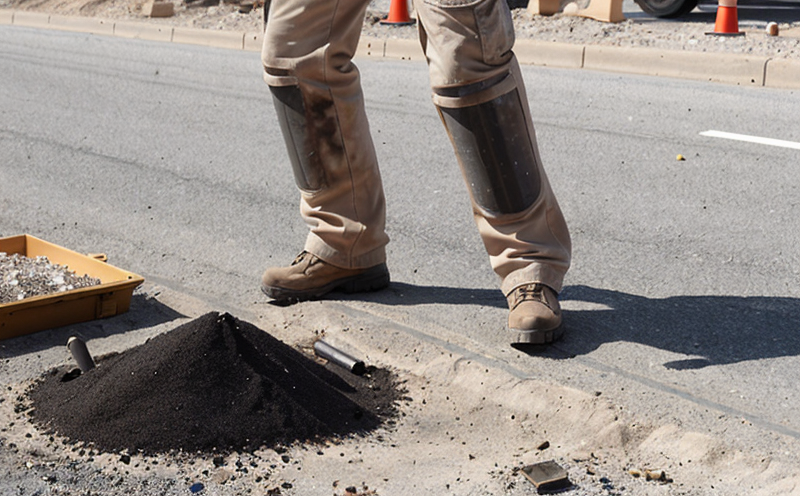ISO 22479 Gas Volume and Composition of Explosives Testing
The ISO 22479 standard is pivotal in ensuring that explosives are safe, reliable, and meet the required specifications for their intended use. This service focuses on determining the gas volume and composition within explosive materials to ensure they comply with international standards.
This testing process is particularly crucial for mining operations where blasting agents must be meticulously analyzed to prevent accidents and ensure efficient extraction processes. The primary goal of this test is to identify any potentially hazardous gases that may form during the manufacturing, storage, or transportation of explosives. Understanding these components helps in optimizing the performance of mining equipment and personnel safety.
The testing procedure involves multiple steps including sample preparation, gas sampling, analysis using chromatography techniques, and finally reporting the results against ISO 22479 standards. The methodology ensures precision and reliability by adhering strictly to specified parameters. This service is essential for quality managers, compliance officers, R&D engineers, and procurement teams involved in explosive manufacturing.
Sample preparation typically involves obtaining a representative sample of the explosive material from various stages of production or storage. Gas sampling then follows using appropriate equipment to capture the gas within the explosive matrix accurately. Chromatographic analysis provides detailed information about the different gases present along with their respective volumes, which are subsequently compared against ISO 22479 guidelines.
The results provide critical insights into potential risks associated with handling and transporting these materials safely. For mining companies, this data helps in selecting appropriate blasting agents that not only enhance productivity but also minimize environmental impact. By adhering strictly to the prescribed standards, businesses can ensure compliance with local regulations while maintaining operational efficiency.
For instance, certain gases like nitrous oxide or nitrogen oxides should be kept at minimal levels as they pose significant health hazards if released into confined spaces. Understanding these components allows for better control over production processes and enhances overall safety protocols within mines.
| Step | Description |
|---|---|
| Sample Preparation | Obtain a representative sample from various stages of production or storage. |
| Gas Sampling | Capture the gas within the explosive matrix accurately using appropriate equipment. |
| Chromatographic Analysis | Analyze the captured gases to determine their volumes and compositions. |
Scope and Methodology
The scope of this testing service includes analyzing gas volume and composition within explosive materials to ensure compliance with ISO 22479 standards. This involves obtaining a representative sample from various stages of production or storage, capturing the gas using appropriate equipment, and performing chromatographic analysis.
Chromatography is used because it allows for precise separation and quantification of individual components within complex mixtures like explosive materials. By identifying specific gases present in these samples, we can assess their potential impact on safety and operational efficiency.
The methodology adheres strictly to ISO 22479 guidelines which specify exact procedures for sample preparation, gas sampling techniques, and analytical methods used during chromatographic analysis. This ensures consistent results across different laboratories performing similar tests, thereby enhancing credibility and reliability of findings.
Eurolab Advantages
- Precision: Our lab uses state-of-the-art equipment ensuring accurate measurements.
- Expertise: Eurolab's team comprises experienced professionals specializing in explosive material analysis.
- Rigorous Standards: Adherence to international standards guarantees high-quality results.
- Efficiency: Fast turnaround times for timely delivery of reports.
Quality and Reliability Assurance
- Regular calibration of instruments to maintain accuracy.
- Ongoing training for staff on latest techniques and methodologies.
- Inclusion of quality control measures throughout the testing process.





